Omnibus 2018 winter damage report for the mid-Atlantic region
davidrt28 (zone 7)
6 years ago
last modified: 6 years ago
Featured Answer
Sort by:Oldest
Comments (32)
davidrt28 (zone 7)
6 years agolast modified: 6 years agodavidrt28 (zone 7)
6 years agolast modified: 6 years agoRelated Discussions
Are you ready for a COLD winter?
Comments (33)Nice to be retired ... with enough supplies to last for several days. If you get up (after daylight - none of this scraping the ice off of the windshield in the dark) and see weather that you find displeasing, you just say (to yourself, or whoever else happens to be within earshot), "Oh, well ... I didn't want to go out today, anyway". Recently a young Canadian wrote a book, "STOP Working ... Here's How You Can", in which he explains how he managed to retire ... ... at age 34. I don't know how many copies of his book that he's sold (and I think that he's working on another) but I'm pretty sure that, living near a beach as he did at that time, he didn't drive through snow in the dark to get to the place where he wrote it! When should you start planning for your retirment and working toward implementation? The day that you're born. Every day that you wait to start makes the hill that you have to climb a little bit steeper. For a long time, the difference is imperceptible ... ... but then the steepness starts to become apparent. Leave it long enough, and you can't make it ... even with ropes and pitons! As each year passes, fewer working people enoy the privilege of a private pension ... and if your company is providing one, I hope that it's irretrievably in the hands of an outside carrier, so that, if the company gets into trouble, they can't raid it, as Enron and various other companies have done. Plus ... people are getting worried about the viability of Social Security (Canada Pension Plan somehat less so, with increased levies taking place in recent years). Good wishes for a warm winter ... and a comfortable, happy retirement ... initiated at not too much past 34, if you so choose ... and have/can arrange(d) it. ole joyful...See Moreanother trip report - interesting trees at Udel, summer edition
Comments (64)Last update? I'm having to take on additional responsibilities at work in this fiscal year and will have less time for posts. ("up or out" LOL) Happened to be over there yesterday, and although mostly losing my sweet tooth, decided I could not resist some ice cream at the Creamery. The Emmenopterys is dead. The Osmanthus X fortunei, though, was full of fragrant flowers and in great shape. I don't know why they are bothering with this Trachy...another polar vortex winter will take it out. Especially because they didn't give one of the most sheltered spots. The moment I saw this, I thought, "omg, is that what I think it is?" And, it is. I would never steal anything...and I certainly wouldn't be updating this thread if I were planning to do so! But this is the rarest plant in this garden...rarer than the Emmenopterys in my opinion, and I'm a little surprised they didn't plant it in a more hidden spot for it to size up. Ladies and gentlemen, the elusive Torreya jackii.Looks grown from seed to me...thinking the needles will get longer. Debated about featuring but already established that there are rare plants in this garden last year, and in other threads over the years. I think plant collectors are mostly an honest lot? Hope so...if it does well in this garden, cutting material will be available in a few years. The wet summer has allowed their Camellia yuhsienensis to size up and finally look really happy. This plant has been struggling for years but more from neglect I think. It is very hardy and was in full bloom only a couple weeks after the polar vortex freezes ended...way before even 'Korean Fire'. I want one eventually, but am happy enough to have a hybrid of it, 'Dream Angel', that has similarly tough ability to bloom in a real mid-atlantic winter. This is the base of their Quercus virginiana...and sorry to say, looks like 2013-2015 and January 2018 have finished this guy off. Top looks very sparse. I guess they are giving it one more year in case a miracle happens LOL. (spoiler alert...they don't) I've decided I like the look of the variegated Illicium - kinda like a poor man's version of the variegated Daphniphyllum, which is very difficult to graft and may just be too weak to survive in most of the mid-Atlantic. Didn't wade in for a closer pic because I bet this place is teaming with Ixodes. I wonder why this Magnolia macrophylla looks sickly. Chlorosis? They have several but this one is the worst looking. Saw them back in the summer...had never actually been around that species in bloom. The floral odor is indeed disagreeable. Not a good picture but a nice combination of 2 Cephalotaxus and Thujopsis. Finally, nice to see Acer griseum but too bad they let the trunk do this....See MoreJanuary 2018, Week 4, The January Thaw, Warmth, Wind, Fire, Seeds...
Comments (101)Jennifer, The first time I saw a BP truck at our Wal-mart, which was just last week, it was only delivering wooden shipping crates of BP onions, but then it was back this week delivering a few cool-season herbs and veggies. I'm thinking of those poor little plants right now because our OK Mesonet station is showing a current temperature of 20 degrees and that's pretty much borderline too cold for some of the plants I saw yesterday, especially given how small they are and the fact they are in small containers and not in the ground where soil temperatures could help insulate them from some of the effects of the cold. I hope the garden center employees covered up those plants last night or moved them indoors. While the very early transplant arrivals often do not freeze or have damage at 20 degrees, sometimes they do....and sometimes the damage is invisible and can result in later problems like early bolting or buttonheading of brassicas....and no one links that bolting or buttonheading in March or April to the fact that the plants were exposed to excessively cold temperatures while on the garden center shelves in late January or early February. I'm sorry your mom has the flu and wish her a speedy recovery. I hope whatever you're fighting is not the flu and that you can successfully repel those germs. I carry hand sanitizer in my purse, not that I am obsessive about it, but I hate touching anything in a grocery store at this time of the year for fear that flu and cold germs are lingering everywhere. I wash my hands constantly, and I do not understand how/why people would use a public restroom facility and not wash their hands. I just don't get it. Rebecca, Well, spinach is really cold hardy. Perhaps dew and/or frost have left enough moisture behind to induce germination. We're in severe drought, are awfully dry and have tons of tiny little green things sprouting everywhere now. In fact, the OK Mesonet's Relative Greenness for our county went from 11% last week to 21% this week, which surprised me, but then when I looked at the ground closely, I could see all the tiny green sprouts popping up in fields, and clearly the program (satellite? radar?) that calculates Relative Greenness for each county is 'seeing' that greenup as well. Are any of y'all allergic to cedar (which actually is juniper, but I cannot win that battle on getting people to correctly label it)? Because it is pollinating down here already and everyone who is allergic to it is having allergy symptoms already, including Tim and I. Just yesterday I was looking at cedars in our neighborhood and commenting to Tim how heavily they're covered in pollen, and Fran and I noticed the same thing while out at wildfires in northern Love County a few days ago. A lot of folks who recovered from the flu now thing they are having a relapse or have caught a cold or whatever, and I just wonder if what's actually happening is they are allergic to the cedar pollen. Nancy, We all are so proud of Amber. She's just an awesome person and her students are so lucky to have a teacher who loves them and works so hard to teach them. Everything she does is always for them and about them, so when she was named Teacher of the Year, she was totally surprised because she doesn't think about stuff like that---her focus is completely on her kids. The riding mower is dead.....or dying. It is around 16 or 17 years old and gets used a lot since we mow about 2 acres regularly. I think it really needed to be retired 3-5 years ago, but Tim is a cheapskate who doesn't want to spend the money to buy another one, so he keeps fixing it and keeps it limping along and just barely working. I just kinda wish he'd go ahead and buy a new one and have something reliable. Weekends are too short as it is and he doesn't get much mowing done if half the weekend is spent chasing down parts and fixing the mower. Jen, I bet it was a nice day to go to the dog park. Our dogs spent a lot more time outdoors today in their dog yard than they usually do in the winter, and they were so thrilled that it was mild, sunny and warm. They were exhausted by the end of the day which I always think is a good thing as it does cut down on how energetic they are in the evening. I think Tigger is the perfect name for a dog! I assume the planters you're planting are your winter sowing? Have fun finishing it up. Nancy, That bermuda grass is such a nuisance, and it creeps into the east end of my garden every year in late summer once it is too snaky for me to hand-weed it out. Johnson grass does the same, and it essentially is bermuda grass on steriods. Since I don't use chemical herbicides and since the presence of the rattlesnakes and copperheads makes weeding too risky after a certain point, that sort of invasion just cannot be avoided. It drives me mad. Even if I could hand-remove it, I'm willing to bet that at some point the summer weather would get too hot and I'd decide I wasn't going to spend all that time out in the heat removing it. I'll be removing all of it this week (I hope) that I can as long as the wind stays down and I am able to spend more time at home in the garden instead of being away at fires. I think on Mon and Tues, the wind will be low enough that I'll be home in the garden. I'm not so sure about Wed and Thurs because the stronger winds are expected to return then. I have been watching for snakes this week on the warmer days because last January they came out here in southern OK on the warm winter days. A little girl in the Austin, TX area was bitten by a rattlesnake at Longhorn Caverns State Park a few days ago on a warm, sunny day when the family was excited to get outdoors and have fun after being cooped up by cold weather, and that certainly caught my attention. Undoubtedly it generally is warmer in Austin than it is up here at this time of the year, but not necessarily that much warmer, so I took her mom's warning about snakes being out to be a serious one. I think your soil will be fine whether the stuff is broken down enough or not. We have gazillions of things that sprout and grow just fine in some pretty awful dense, red clay.....although I'd never expect my precious garden plants to survive and perform well in that stuff. It is merely that as the soil gets better via amending, the plant performance improves year after year. I've always been in it for the long haul---not expecting to totally turn around the soil in 3, 5 or even 10 years, but just dedicated to continually improving it slowly over time. There's places in my garden that probably never get as much compost as I'd like, but the plants grow well there anyway. I do look at the improved soil now and have trouble remembering how truly awful it was in the beginning---but all I have to do is dig down maybe a foot to get beneath the area of improved soil and there's my reminder of the awful red clay we started out with. We only eat out about once a week, something made easier by the fact that it is pretty much too long of a drive to go anywhere that we'd really like to eat, and eating out usually is restricted to the weekend anyway since Tim's long commute makes his day incredibly long as it is. By the time he walks in the door at night, he's been gone 13 or 14 hours and going out to eat is not on his list of things he wants to do....and I don't blame him. I am hoping for a better week this week than last week when we had fires virtually every day. Having said that, we're off to a bad start, with the fire pagers going off for a vehicle in the roadway on fire about a mile from our house around 4 a.m. this morning. I am sure there's tons and tons I do not understand about motor vehicles, but I just do not understand how you're driving up the road at 4 a.m. and all of a sudden your car or truck bursts into flames. That must be a terrifying moment when you realize you're in a vehicle that is on fire. So, now that I am up and wide awake, there's no way I can fall back asleep. Tim, by contrast, can crawl back into bed after something like that and be asleep and snoring in 5 minutes. I wish I could fall back asleep like that, but it just doesn't happen---once I'm awake, I'm awake to stay. This is useful in summer because I just go outdoors at the break of day to get into the garden early and beat the heat, but not so useful in winter when it is cold outdoors. Dawn...See MoreAugust 2018, Week 2, I Love A Rainy Night
Comments (52)Nancy, I hope your nice weather lasted. I wasn't watching the weather much last week other than trying to keep an eye on our own. Tim said something to me yesterday that reminded me what a tough summer it has been here. He said he couldn't think of any community in our county having two such awful losses of members in such a short time, and after I thought about it a while, I think he is right. We are in a little unincorporated rural to semi-rural area of Love County in between the towns of Marietta and Thackerville, and our neighbor who was the lineman was the second tragic loss of a community member here in the last couple of months. The first was a gentleman who perished in a fire after the gasoline tanker truck he was driving was cut off in traffic, overturned and burned. Two horrible losses suffered by two families in such a short time in such a small community as ours....it is unfathomable. The first was one of those things that your brain refuses to believe when it hears it, and then the second one was exactly the same.....too horrific to be real. I think all of us here are just so done with 2018 and trying to remain positive and look ahead to what hopefully will be a better year in 2019. I wonder if your burnweed will be burnweed? I still think when Jason IDs a plant, you can take his ID as gospel. I don't think I've ever seen it here, but y'all have such different soils and different climate up there in some ways that it is like we are in a whole different country----ha ha, at least you are in the Green Country and we're in the Mostly Brown Country. That would be funnier were it not so true. Larry, In August of any year, I still think it is better to be too wet than to be too dry. We had good rainfall last week, but the dry ground slurped it right up. Well, at least the rain did fall. Since you came back and posted a photo of your little Yorkie (he is so adorable!), I guess you and the tractor survived the mud and are not stuck out there in it. Jennifer, I didn't try Vick's on the feet because we didn't have any and I wasn't going to go anywhere for any reason. I am starting to feel better but it was a rough week, and I think the recovery is going slowly. I am bored, but that's a good sign, because I don't start feeling bored until I start feeling better. It sounds like you had a really fun day babysitting that six year old. I bet she was disappointed to learn she was going somewhere else the next day! There will be time later to catch up on outdoor work. Just take care of yourself. Nancy, Heavy rainfall in August is such a gift that you just have to get over the pouting, you know! My grandmother always admonished us to never look a gift horse in the mouth. If I whine about rain in August I know what will happen----the following August we won't get any rain at all. So, I hope you got the pouting and all out of your system and can appreciate the gift that August rainfall truly is. Sometimes when we say we are bored, I really think that what we mean is that we aren't able, for whatever reason, to do the things we really want to do. Sometimes I'll be whining to myself that I'm bored, but it isn't because there aren't things to do---they just aren't the things I want to do. Because of that, I don't do them and just sit and say that I am bored. Your 90 degrees sounds nice to me (unless the heat index was, like, 99 or 100). We were 97 on Friday and 96 yesterday. I think today is supposed to be closer to your 90, but I guess I haven't looked at the forecast in a couple of days so I'm not sure. Larry, Hercules is so precious. I love Yorkies but we always have medium to big dogs. I'd have a Yorkie in a heartbeat though. It is hard to watch our furbabies get old and sick. We have been down that road with so many dogs over the years, and our black lab mix, Jet, who is now 13, has chronic kidney disease and, according to the vet, is in the final months of his life. He is on medication and a special prescription diet and I try to treasure every day we have left with him because there likely won't be too many more of them. He was never supposed to be ours. Born to a stray dog, Honey, who followed me home when I was walking our other dogs, he was one of a litter of four. Tim's best friend picked out two of them, Jet and Duke, to adopt as his own when they were only two days old. He got the pick of the litter and we promised Ken we'd reserve them for him and not give them away to anyone else once they were big enough to leave their mother. The following week, Ken was diagnosed with a glioblastoma brain tumor. Again, we promised him we'd keep his two puppies with us until his treatments were done and he was ready to bring them home to his ranch. Sadly, his cancer progressed quickly. Diagnosed in late March or early April, he was gone before the end of May. By then, we were too attached to "Ken's dogs" to let them go, so we kept them. His wife didn't want them, as she felt she couldn't cope with two new dogs while coping with his death and trying to keep the ranch running full time while also working full time in Dallas. We understood and were happy to keep Jet and Duke ourselves. Duke left us three years ago and I've been all too aware ever since then that Jet's time is coming too. It is hard. I wish they aged at the same rate as we do, but they don't. As hard as it is to lose our furbabies, I have accepted that we just have to endure the pain of losing them----it is the price we pay for having had such wonderful pet companions to share our lives. Dawn...See Moredavidrt28 (zone 7)
6 years agolast modified: 6 years agodavidrt28 (zone 7)
6 years agolast modified: 6 years agotimbz6
6 years agotimbz6
6 years agodavidrt28 (zone 7)
6 years agodavidrt28 (zone 7)
6 years agolast modified: 6 years agodavidrt28 (zone 7)
5 years agolast modified: 5 years agodavidrt28 (zone 7)
5 years agolast modified: 5 years agodavidrt28 (zone 7)
5 years agolast modified: 5 years agoDave in NoVA • N. Virginia • zone 7A
5 years agolast modified: 5 years agodavidrt28 (zone 7) thanked Dave in NoVA • N. Virginia • zone 7Adavidrt28 (zone 7)
5 years agolast modified: 5 years agoDave in NoVA • N. Virginia • zone 7A
5 years agodavidrt28 (zone 7)
5 years agolast modified: 5 years agoajs317
5 years agostuartlawrence (7b L.I. NY)
5 years agoajs317
5 years agodavidrt28 (zone 7)
5 years agolast modified: 5 years agostuartlawrence (7b L.I. NY)
5 years agolast modified: 5 years agoDave in NoVA • N. Virginia • zone 7A
5 years agodavidrt28 (zone 7) thanked Dave in NoVA • N. Virginia • zone 7A
Related Stories
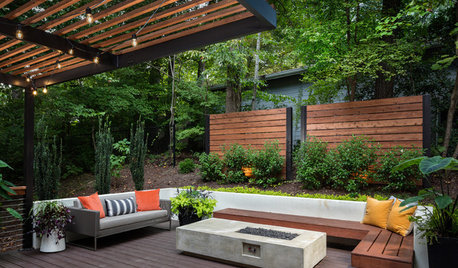
INSIDE HOUZZHow Much Homeowners Spent on Landscape Projects in 2018
Two recent Houzz reports show median costs for landscape upgrades last year and which projects were most popular
Full Story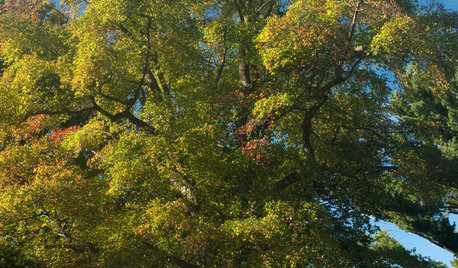
TREESGreat Design Plant: Nyssa Sylvatica
The black gum tree tolerates moist soil and provides many years of beautiful foliage, from summer to fall
Full Story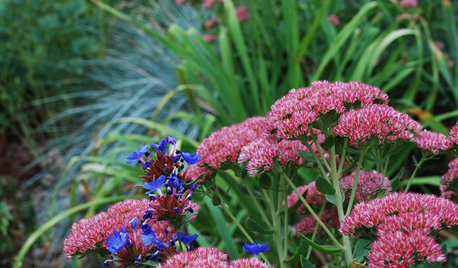
GARDENING GUIDESFall Is Calling: What to Do in Your October Garden
Get a jump on winter prep or just sit back and watch the leaves fall. The beauty of an autumn garden is in all the choices you have
Full Story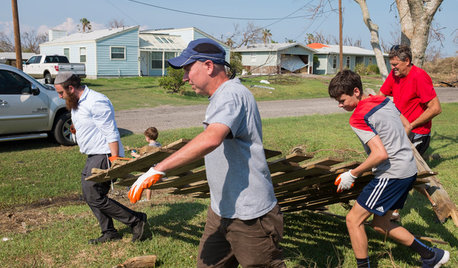
DISASTER PREP & RECOVERYHurricane Harvey: How You Can Help
Want to donate or volunteer to aid victims of the storm? Here are groups assisting with disaster relief and recovery
Full Story
GREEN BUILDINGHow to Harvest Rainwater for Your Garden
Conserve a vital resource and save money by collecting stormwater for irrigation in a barrel or tank
Full Story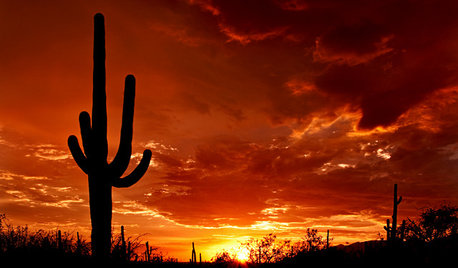
GARDENING GUIDESMeet the Mighty Saguaro of the Desert Landscape
You’ve seen its form in films, on souvenirs and much more. Now get to know this iconic cactus of the Sonoran Desert
Full Story
WHITE KITCHENSWhite Cabinets Remain at the Top of Kitchen Wish Lists
Find out the most popular countertop, flooring, cabinet, backsplash and paint picks among homeowners who are renovating
Full Story
MATERIALSInsulation Basics: What to Know About Spray Foam
Learn what exactly spray foam is, the pros and cons of using it and why you shouldn’t mess around with installation
Full Story
BASEMENTSDesign Workshop: Is It Time to Let Basements Become Extinct?
Costly and often unnecessary, basements may become obsolete — if they aren’t already. Here are responses to every reason to keep them around
Full Story
LIVING ROOMS8 Reasons to Nix Your Fireplace (Yes, for Real)
Dare you consider trading that 'coveted' design feature for something you'll actually use? This logic can help
Full Story


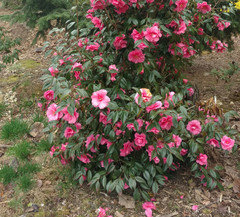

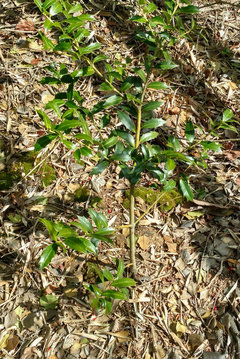


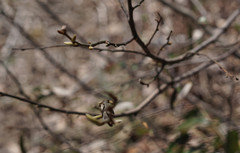
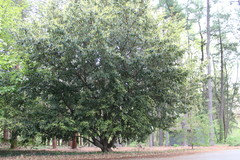
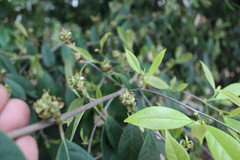

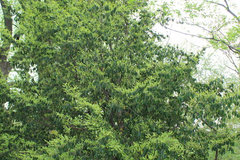



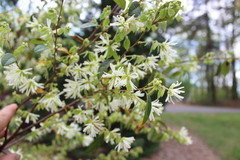

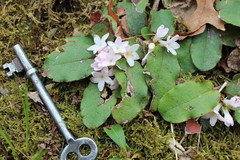

stuartlawrence (7b L.I. NY)